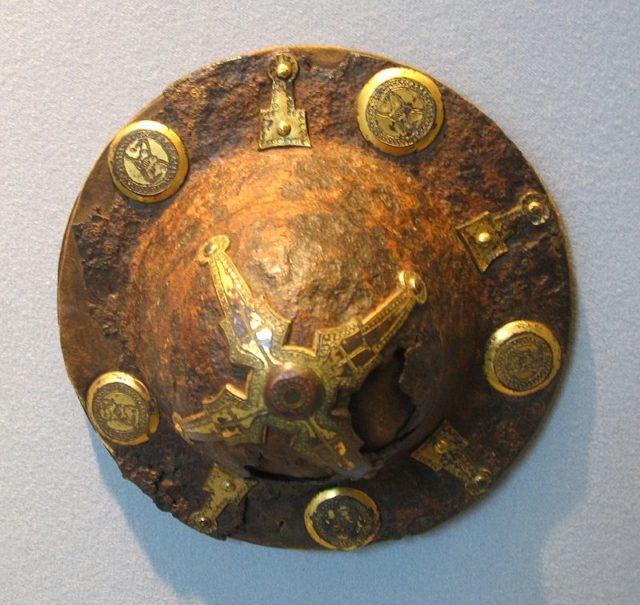There are many avid metal detectorists throughout the world. Some do it as a hobby and enjoy searching for small treasures beneath the ground, while others hope to find a massive amount of treasure.
Just recently, two metal detectorist friends ended up stumbling across something rather extraordinary. They were searching some open farmland in Northamptonshire when they happened to uncover two skeletons that date to the 5th and 6th centuries.
The two men, Dave Derby and Alan Standish, found the remains buried in a field at Whitehall Farm. One of the remains is thought to have belonged to an adult man who was buried with his shield, which had been placed on top of his chest. This was the how the metal detectors picked up a signal. What if the remains hadn’t been buried with a piece of metal? Most likely they would never have ever been found.

Derby, a 79-year-old, and Standish, a 59-year-old, made the discovery of the remains at the same site archaeologists uncovered to find the remains of a Roman villa.
The shield found on the man’s chest is known as a shield boss. It is a part of the shield that is meant to protect a warrior’s head. Many remains have been found with shields that date back to the same century. It is believed warriors were buried with their shield so that it would protect them on their final journey.

After finding the body, the two men got a license to dig further around the area. This led them to find yet another body, although this time it was that of a teenage girl. The men even found a good horde of coins, pottery, and some building materials around the same area. It had been found on a plateau that overlooked the Weedon Road where the Roman villa had once stood.
Derby said that he had gone with his friend Alan because it seemed like a good spot where they might have luck finding something significant. He added that he had once found a Roman villa around there about 15 years previously. He explained that since the agriculture had changed, he and his friend wanted to go and take another look.
After they got the signal of some kind of metal, they dug down and revealed the bones. The men knew that since there were bones involved, they had to get a license to dig further. There are many rules involving bone digging, especially human bones. After getting the license, the men returned with an archaeological team to finish the dig. This revealed the eventual remains of the teenage girl.
The men said that it was a very exciting find, adding that they had never expected to come across anything like it. They had added that it is a rather fascinating hobby, as they never know what they are going to find.
The lead archaeologist, Steve Young, had said that he and his team believe that the two bodies are from two separate centuries. He added that it is rather interesting because the male was buried north-south with certain burial goods, while the girl’s remains had been buried east-west with her burial goods.
Young explained that it was generally a pagan tradition to include burial gifts and orient the remains north and south. However, Christians generally weren’t buried with goods and were positioned east and west.
These different burials actually suggest that even though Christianity was being spread throughout the United Kingdom at that point, people had still believed that the pagan gods would take care of the dead in the afterlife.
Back in those days, men were usually buried with a weapon – a shield or a sword, for example.
After archaeologists were put on the excavation, they uncovered over 200,000 artifacts. The haul had included 560 coins, 20 brooches, 6 rings, over 30,000 animal bones, and 20,000 fragments of pots.
